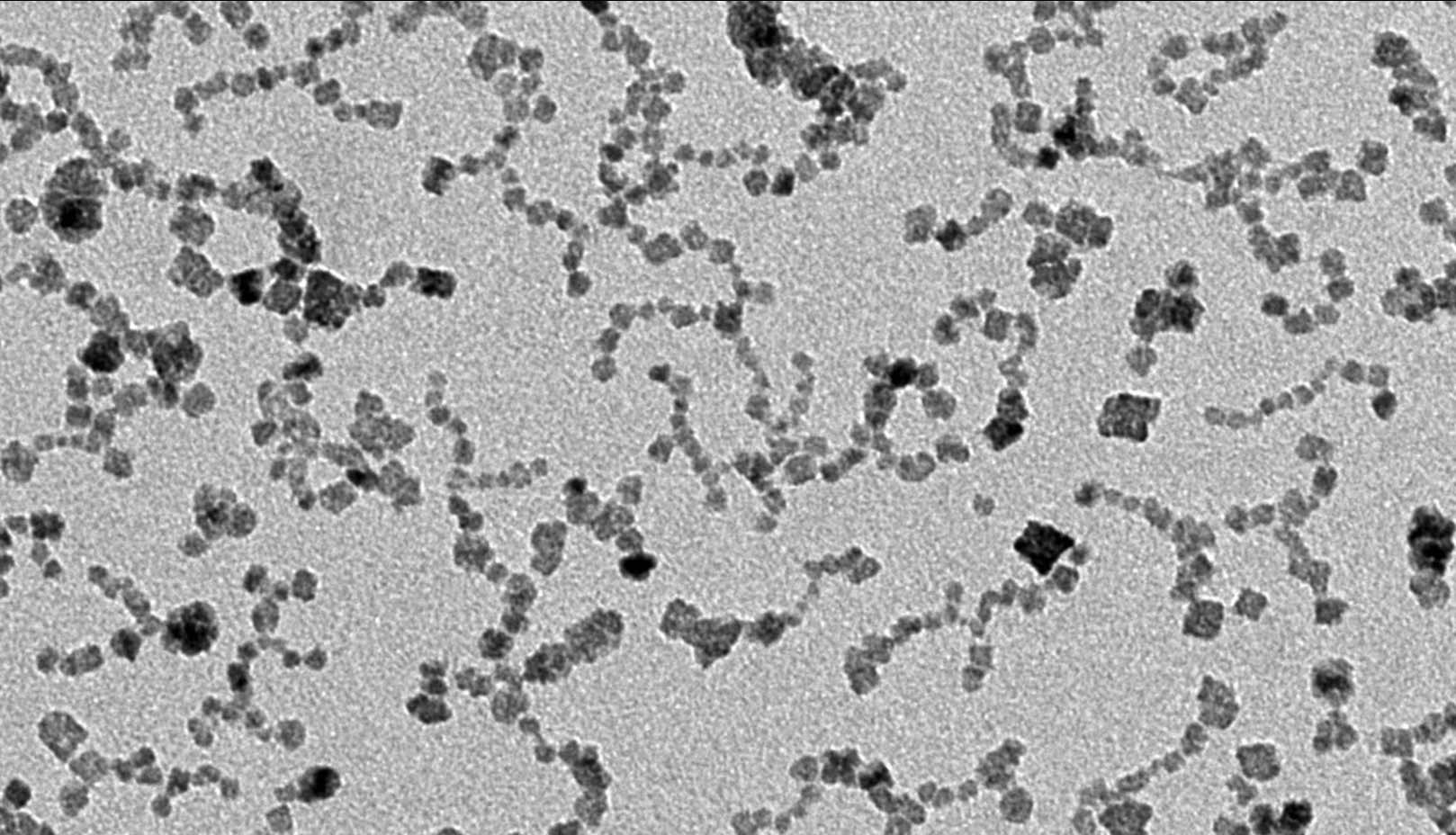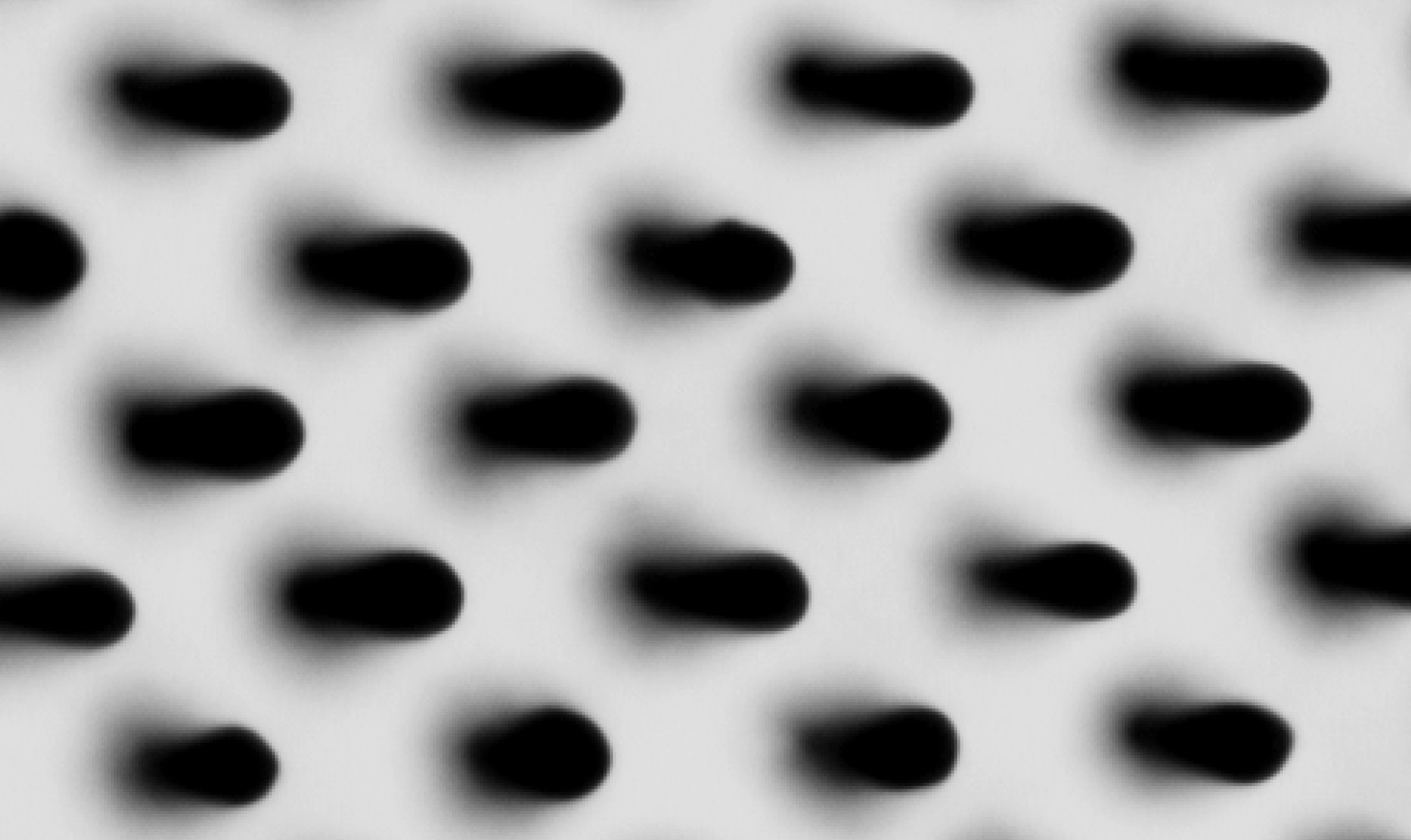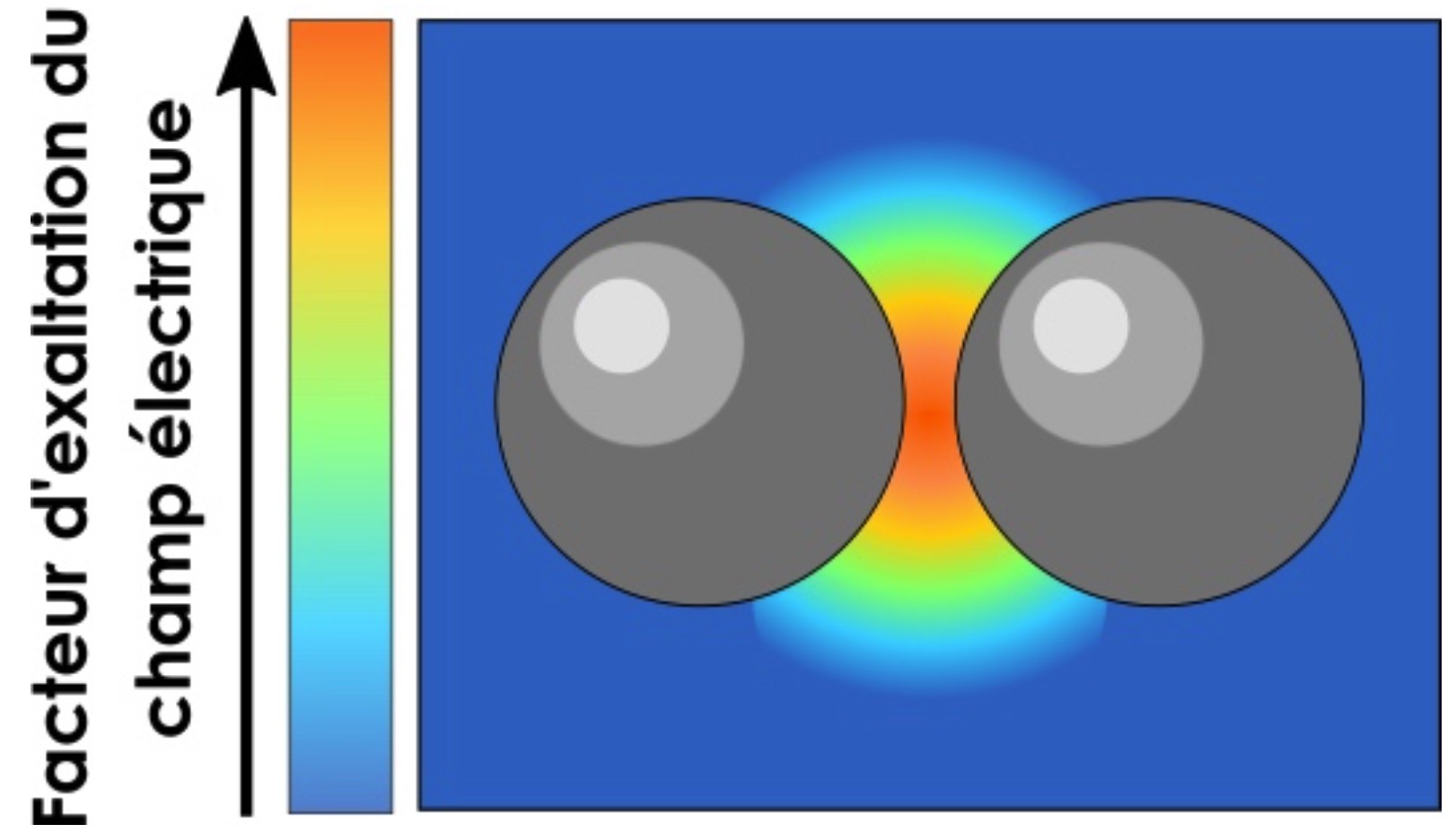Nanomaterials for medicine and the environment
Nanomaterials offer advantages in surface treatment, healthcare, medicine and environmental analysis. However, their widespread use raises concerns about their impact on the environment and human health. Our team is focused on understanding the performance of nanomaterials in real-world scenarios, bridging the gap between academic research and applications. We explore their use in nanomedicine, their life cycle, addressing issues such as their interactions with biofluids, their long-term fate, dissemination in the environment and health implications.
Members
- Victor Baldim, post-doctorant
- Jean-François Berret, Research Director CNRS
- Gaëlle Charron, Senior lecturer – UPC
- Gwennhaël Brackx, Doctorant
- Ngoc Mai Duong, Doctorant
- Marine Le Goas, post-doctorant
- Braham Mezghrani, post-doctorant
- Angélina Noclain, Doctorante
- Evdokia K. Oikonomou, post-doctorant
- Milad Radiom, post-doctorant
- Victoria Reichel, post-doctorant

Cerium oxide nanoparticles for stroke treatment
Nanomedicine is the medical application of nanotechnology. Our research focuses on the functionalization of antioxidant cerium oxide nanoparticles for the treatment of stroke.
Publications
vide
Oxidizing properties of cerium oxides
Cerium oxide (CeO2) nanoparticles have properties similar to those of cellular enzymes that scavenge reactive oxygen species. We show for the first time that these redox properties correlate with the fraction of Ce(III) on the surface of cerium oxides.
Référence : V. Baldim*, F. Bedioui, N. Mignet, I. Margaill and J.-F. Berret*, The enzyme-like catalytic activity of cerium oxide nanoparticles and its dependency on Ce(III) surface area concentration, Nanoscale 10, 6971–6980 (2018)
Functional polymers for coating metal oxide nanoparticles
In nanomedicine, there is an urgent need for coatings suitable for a wide range of nanoparticles. In this collaboration with SPECIFIC POLYMERS, we are synthesizing polymers based on poly(ethylene glycol) and phosphonic acids, and demonstrating their effectiveness for coating cerium, iron, titanium and aluminum oxide nanoparticles.
Référence : V. Baldim, A. Graillot, N. Bia, C. Loubat and J.-F. Berret*, Mono- versus multi-phosphonic acid based PEGylated polymers for functionalization and stabilization of metal (Ce, Fe, Ti, Al) oxide nanoparticles in biological media, Advanced Materials Interfaces 6 (7), 1801814 (2019)
Versatile coating platform for nanoparticles in materials science and biology
This review traces the collaboration with SPECIFIC POLYMERS and the results obtained since 2014 on functional polymers for nanomedicine applications. We are developing specific coatings for the functionalization and delivery of nanoparticles in vivo for MRI imaging and stroke treatment.
Référence : J.-F. Berret* and A. Graillot, Versatile coating platform for metal oxide nanoparticles: applications to materials and biological science, Langmuir 38 (18), 5323–5338 (2022)
Review article on cerium oxide applications in nanomedicine
Cerium oxide nanoparticles have a redox activity that enables them to treat inflammatory pathologies. In this review, we analyze the behavior, chemical stability, surface coatings and redox mechanisms of cerium oxides.
Référence : M. Lord*, J.-F. Berret*, S. Singh, A. Vinu, A.S. Karakoti*, Redox Active Cerium Oxide Nanoparticles: Critical status and burning issues, Small 2102342 (2021)
Financements
Projet ANR ICONS (2016-2019)
Cerium oxide nanoparticles coated with innovative industrial polymers for stroke treatment
Projet ANR Stric-On (2020-2024)
Potentiation of post-stroke thrombolysis by cerium oxide nanovectors
Horizon Europe Framework Programme, Marie Sklodowska-Curie Action (2024-2026)
Improved Plasminogen Activator based on Cerium oxide nanoparticles for thrombolysis in ischemic stroke

On-chip model of lung function
We studied the interaction of inhaled airborne particles with lung fluids. We have also developed microfluidic chips to mimic lung functions operating in bronchi and alveoli.
Publications
Vide
Interactions of silica nanoparticles with pulmonary surfactant
Pulmonary surfactant in the alveoli acts as a physical barrier to systemic translocation of inhaled nanoparticles into the blood compartment.
Référence : F. Mousseau*, C. Puisney, S. Mornet, R. Le Borgne, A. Vacher, M. Airiau, A. Baeza-Squiban and J.-F. Berret*, Supported pulmonary surfactant bilayers on silica nanoparticles: Formulation, stability and impact on lung epithelial cells, Nanoscale, 9, 14967-14978 (2017)
Nanoparticle-induced physical toxicity in alveoli
Under moderate exposure to nanoparticles, alveolar lung fluid changes from a liquid to a gel, altering its flow properties. These changes in viscosity can then impede recirculation during respiration and induce physical toxicity.
Référence : L.P.A. Thai, F. Mousseau, E.K. Oikonomou, M. Radiom and J.-F. Berret*, Effect of Nanoparticles on the Bulk Shear Viscosity of a Biomimetic Lung Surfactant, ACS Nano 14, 466 – 475 (2020)
Development of an alveolus-on-chip mimicking respiratory function
This article describes the development of a chip-based model of the alveolar air-tissue interface. This chip mimics the expansion dynamics associated with respiration and an environment conducive to the growth of alveolar epithelium.
Référence :M. Radiom*, Y. He, J. Peng, A. Baeza-Squiban, J.-F. Berret, Y. Chen*, Alveolar mimics with periodic strain and its effect on the cell layer formation, Biotechnology and Bioengineering 117(9), 2827-2841 (2020)
Viscoelastic properties of human mucus
Active microrheology using magnetic rods to determine viscosity and elasticity of human mucus collected from patients
Reference: M. Radiom, R. Hénault, S. Mani, A. Grein Iankovski, X. Norel, J.-F. Berret*, Magnetic wire active microrheology of human respiratory mucus, Soft Matter 17, 7585–7595 (2021)
Effects of brake wear particles on bronchial epithelium
We are studying the barrier properties of the respiratory epithelium to brake wear nanoparticles by measuring their translocation, mucus production and repair efficiency.
Référence:Chloé Puisney-Dakhli, Mickael Tarraud , Yann Sivry, Jean-François Berret, Armelle Baeza Squiban*, Effects of brake wear nanoparticles on the protection and repair functions of the airway epithelium, Environmental pollution 327, 121554 (2023)
Financements
ANR AlveolusMimics Project (2017-2021)
Alveolus-on-chip using human pluripotent stem cells for mechanistic understanding of nanoparticle translocation in the respiratory system
MucOnChip Project (2021-2024)
Lab-on-Chip model of mucociliary clearance for the treatment of inflammatory lung diseases
ANR INHALE Project (2023-2027)
Controlling surfactant therapy for acute respiratory distress syndrome with two-phase flow and machine learning
Defended theses
Fanny Mousseau (2017)
Lung surfactant, a key barrier in the cellular response to nanoparticle exposure
Chloé Puisney (2018)
Fate and impact of manufactured and brake wear nanoparticles on the respiratory epithelial barrier
Stefan Rouach (2023)
Microfluidics of ciliated surfaces: A biomimetic approach to mucociliary clearance in the lungs

Tracing and metrology of nanomaterials in the environment
The development of large-scale applications for nanomaterials implies their inevitable dissemination into the environment, in water, soil and bodies. We are developing metrological tools to track nanomaterials in these complex environments.
Publications
vide
Marking and isotopic tracing of nanomaterials in surface waters
Aquatic and biological environments are complex environments that may contain nanoparticle constituents. Tracing nanomaterials in these environments is a real challenge, as they can be clearly distinguished neither by size nor composition.
In collaboration with IPGP, we have developed an analytical method based on stable minority isotopes, enabling us to track nanoparticles rich in elements endogenous to the medium and their degradation products in a complex environment.
Référence: Nurul I. Supiandi, G. Charron, M. Tharaud, L. Cordier, J.-M. Guigner, M. F. Benedetti, and Y. Sivry*, Isotopically Labeled Nanoparticles at Relevant Concentrations: How Low Can We Go? The Case of CdSe/ZnS QDs in Surface Waters, Environmental Science and Technology 53, 2586–2594 (2019)
Reference: N. Izyan Supiandi, G. Charron, M. Tharaud, M. F. Benedetti & Y. Sivry*, Tracing multi-isotopically labelled CdSe/ZnS quantum dots in biological media, Scientific Reports 10, 2866 (2020)
Defended theses
Nurul Izyan Supiandi (2017)
A study of fate and behavior of isotopically labelled quantum dots in aquatic environment at relevant concentrations
Jeanne Volatron (2018)
Cycle de vie de nanoparticules dans l’organisme : biotransformations et biodégradation

SERS sensors for aquatic contaminants
There is a large deficit in the measurement of contaminants in aquatic environments, given the challenges of preserving water resources. To remedy this, we are developing frugal contaminant detection methods based on the SERS effect, which eliminate the need for high-tech instruments.
Publications
vide
Building transferability of SERS results
In the vicinity of nanostructured plasmonic surfaces with spikes or gaps, the electric field undergoes an exaltation of several orders of magnitude at certain frequencies. In these so-called “hot spots”, the molecules present a giant Raman signal: this is the SERS effect. The exaltation of the signal is such as to enable the detection of trace concentrations. In this review, built with several international laboratories, we discuss the practices needed to standardize SERS measurements and promote the maturation of SERS into a routine analytical tool.
Référence: Steven E. J. Bell, Gaëlle Charron, Emiliano Cortés, Janina Kneipp et al., Towards Reliable and Quantitative Surface-Enhanced Raman Scattering (SERS): From Key Parameters to Good Analytical Practice, Angewandte Chemie International Edition 59, 454-5462 (2020)
Development of a low-cost Zn2+ SERS sensor for surface water analysis
The Zn2+ ion is a heavy sentinel ion: it is commonly used as an indicator of contamination by other, more toxic heavy metal cations (Cd2+, Pb2+, Hg2+), but much less abundant and therefore more difficult to detect. The sensor we have developed enables us to carry out a number of measurements suitable for geochemical measurement campaigns (20-50 determinations), with a number of replicates guaranteeing accuracy comparable to the standards of laboratory ICP-OES or ICP-MS measurements, directly in the field.
Référence: Brackx, G., Guinoiseau, D., Duponchel, L. et al., A frugal implementation of Surface Enhanced Raman Scattering for sensing Zn2+ in freshwaters – In depth investigation of the analytical performances, Scientific Reports 10, 1883 (2020)
Doing away with calibration: complexometric titration with SERS
Before the advent of spectrophotometric techniques, metal ion concentrations in samples were measured by means of complexometric titrations in the presence of colored indicators. These titrations exploited colorimetric or spectrophotometric transductions of low sensitivity. Here, we revisit these complexometric titrations using SERS transduction. This method eliminates the tedious task of building a reliable and robust calibration model, and significantly improves the practicality of concentration measurement.
Référence: Ngoc Mai Duong, Angélina Noclain, Victoria E. Reichel, Pierre de Cordovez, Jean-Marc Di Meglio, Pascal Hersen and Gaëlle Charron*, A new look at an old classic: implementation of a SERS-based water hardness titration, Analyst 148, 3641-3649 (2023)
Financements
Projet ANR UnivSERS (2018-2022)
Capteurs SERS universels pour le suivi à haut débit des eaux douces
Emergences Ville de Paris Métal’Eau (2018-2022)
Defended theses
Gwennhaël Brackx (2017)
A multidisciplinary approach to heavy metal detection in aquatic environments
Mai Ngoc Duong (2022)
Development of microfluidic platform for continuous monitoring of aquatic contaminants in freshwater
Angélina Noclain (2022)
Development of surface-excited Raman scattering sensors for analysis of natural water samples
